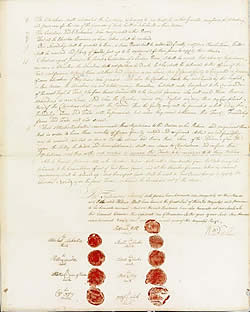
A treaty is contract, an agreement between nations. In the earliest days, treaties were made with the Indians by the British, various companies, colonies, states, then later, only by the U.S. federal government. Making treaties with Indian tribes was the common way to make alliances with tribes and to acquire land for settlers. The treaties generally designated specific lands for the tribe, including provisions about wildlife and other natural resources the Indians had continued use of. However, eventually all of the Treaties were broken and violated by settlers and the U.S. Government. Treaties are a large part of federal Indian law for most of the tribes in the Lower 48 states. Treaty-making with Indian tribes was terminated by Congress in 1871, just a few years after the purchase of Alaska, so there are no treaties with Alaska tribes.
Over time, through many conflicts between tribes and the U.S. government, some guidelines for interpreting Indian treaties and federal Indian laws came from interpreting Indian treaties in federal courts. These types of guidelines for courts are called ‘Cannons of Construction.’ The three basic canons for interpreting Indian law cases are: ambiguities in treaties must be resolved in favor of the Indians, Indian treaties must be interpreted as the Indians would have understood them, and that Indian treaties, agreements and laws must be construed liberally in favor of the Indians.
| << Back | Next >> |


